When I saw that all the machines in the cardio room were occupied, I almost turned around and left the gym. But for some reason—maybe it was because I’d trudged through a near-blizzard and going home would mean putting on wet clothes—I lingered. As I scanned the room, waiting for someone to finish, my eyes fell on a poster taped to a door on the opposite end. On it was photograph of a female mountain biker pedaling over a rocky hill. “Realize your Dreams!” was emblazoned across the top in garish purple typeface, followed by the gym’s logo.
The door opened and a woman emerged. Sweat darkened her tank top at her chest and underarms. Head down, she slammed the door behind her and began walking briskly toward the exit, where I was standing. She glanced at me as she passed and I realized that what I thought had been sweat on her face were actually tears. A better person would have gone after her and tried to console her. I wove through the rows of machines, each manned by an ear-budded runner staring into middle distance, pushed open the door, shut it behind me.
The room was very dark, and even with my phone’s flashlight I couldn’t find a light switch. What I did find was a stationary bicycle. I straddled the seat and began to pedal. The woman must have had the same proportions as I, because the seat and handlebars were at the exact right height. As I pedaled, the bike’s screen switched on, illuminating the room.
On the screen, where there should have been the usual exercise settings, I saw, well, me. Or, rather, a night-vision video recording of myself on the bike, shot from behind, pedaling, my ponytail bouncing. I turned my head, searching for any evidence of a camera, but found only the room’s dark corners.

I tapped the bike’s touchscreen and mashed the buttons on the control panel, but the image remained. Maybe this was some sort of prank, or perhaps a social science experiment, or an art project—the college was nearby, after all. Now that I was being watched, I felt the impulse to pedal faster. I righted my posture and squeezed the handlebars.
In the corner of the image on the bike’s screen, I saw something emerge from the shadows: a fist-sized reptilian head with two pale spots for eyes, followed by a thin tail. It began to slither in the direction of the bike. I looked around the room, but there was no sign of any movement. Onscreen, the snake wound its way up the front post of the bike until it was looking Screen-me practically in the eye. I kept pedaling, my heart-rate rising, my breath becoming ragged. From the handlebars, the snake began to very slowly make its way up Screen-me’s arm.
I flinched when something cold gripped my left wrist, but when I looked there was nothing, just my arm in the screen’s pale light. The snake on the screen, meanwhile, was looping itself around Screen-me’s neck. I began to cough and sputter. I tried to slow down, to pry myself from the bike, but the straps seemed to tighten around my sneakers, cutting off the circulation of my toes. I gasped, my arms flailing.
Then the screen turned off. The straps loosened.
I swung my legs off the bike and doubled over.
When I emerged into the cardio room, the machines were empty. A janitor chided me, saying that the gym had been closed for fifteen minutes, and that I needed to leave immediately.
Legs aching, I dressed in my damp street clothes and stepped out into the snow.
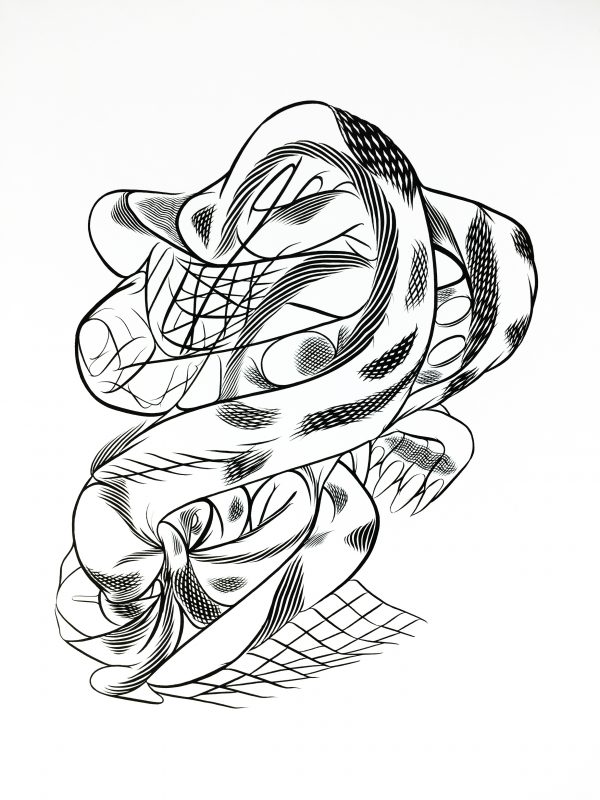
That night, my sleep was deep and dreamless. I woke long before my alarm was set to go off. A sliver of blue morning sky was visible through the curtains. My husband’s rhythmic breathing next to me brought back the runners panting in the cardio room, and for a moment the gym’s sharp scent of disinfectant and sweat seemed to fill the air above the bed. I had not told him about the bike or the snake. He’d been frustrated about a disagreement he’d had at work, and this was what occupied our dinner conversation. Then he went to meet some friends at a nearby bar, leaving me home to contemplate my strange evening.
I am not the kind of person who wakes up early, and I am not the kind of person who goes to the gym before work. But at that moment, as the blue behind the curtain turned to gray and then to a bright white, I knew where I needed to be.
Shivering, I slid into the cool, slippery fabric of my gym clothes, stuffed my work outfit into my gym bag, and left my husband a note telling him that I was heading into the office early to handle an urgent request from a client. This, I decided, sounded more believable than me being awake and exercising at 6:30am.
There were only a handful of runners in the cardio room, the tinny percussion of their workout playlists barely audible over their breath. I walked down the aisle of machines, toward the door with the “Realize your Dreams” poster taped to it.
Just as I had the evening prior, I swung it open, shut it behind me, and turned on my phone’s flashlight. The bike was still there, glinting in the LED ray. Once again, I climbed on and began to pedal.
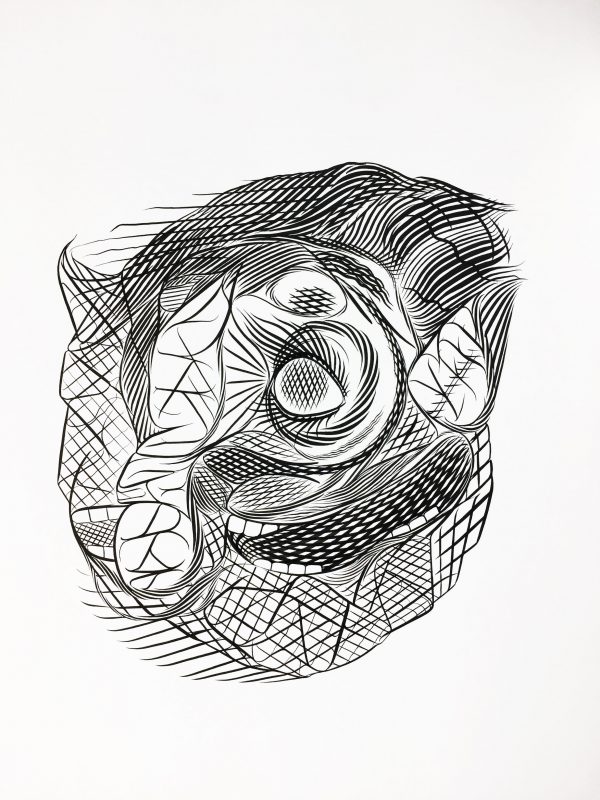
Just as before, the screen flickered on and there was the night-vision image of me pedaling, shot from behind. Looking at one’s own back is always uncanny—something strangers see but you only catch glimpses of in mirrors. Instinctually I turned around, searching for a camera, but this time, when I turned back to the screen, the figure was still gazing over her shoulder, her shining white eyes staring up into my own. She blinked. It wasn’t me, though there was something familiar about the face. I tried to place where I knew her from. Then I recognized the pout, the wrinkle in the brow. It was the crying woman I’d seen last night.
I slowed to a stop. She stepped off the bike, and stared at the camera, as if waiting for me to do something. I started pedaling and she walked to the door. A grid appeared on the screen—what looked like security footage of the different areas in the gym. She began to run. The faster I pedaled, the faster she ran, through the squares of the cardio room, the hallway, and finally out the exit. The street was white with snow and through the flakes I could make out her dark figure as it darted in front of some headlights and fell. Then the grid disappeared, the screen turned to white, and the pedals locked in place with a violent jerk, nearly throwing me over the side of the bike.
As I caught my breath I noticed that the room had grown colder. Goosebumps began to prick up on my forearm and I could see my breath. My phone rumbled and flashed. It was work, asking why I was late and if everything was ok. Somehow two hours had passed since I’d arrived at the gym. Winded, with burning calves, I made my way to the door.
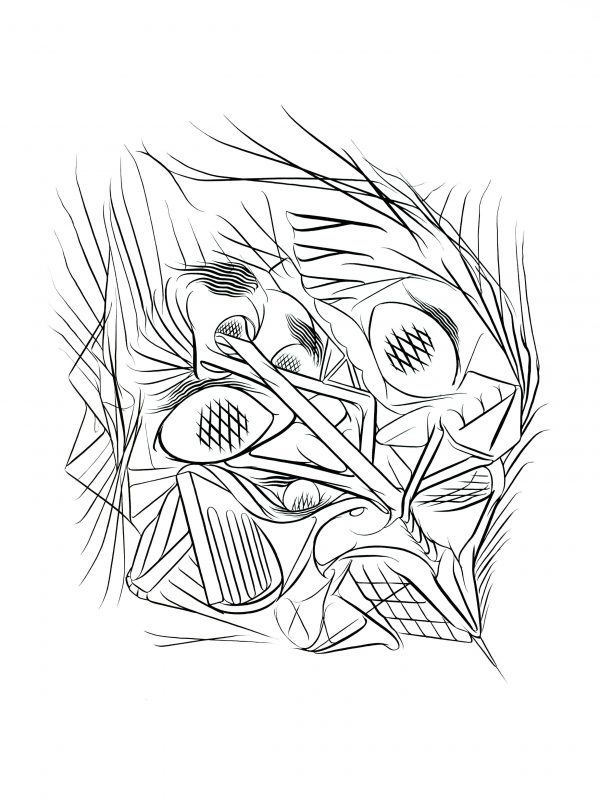
At work, I wrote seventeen emails. I made three spreadsheets. I spun around in my chair until I was nauseous. All I could think about was the gym. The whir of the bike. The crying woman’s eyes, white in the night-vision footage. The snake. There was a message there, somewhere. I just needed to untangle it. My eyes fell on the smoky black crystal that I kept next to my computer, a thank you gift from my co-worker Nikki after I’d stayed late to help her finish a report. If anyone could untangle the message, it would be her. I texted asking if she wanted to grab coffee.
When we were outside the office building, staring at the parking lot, coffees in hand, I told her about my gym experiences. I pressed my hands into my cup for warmth as Nikki puffed on a clove cigarette. She wore a ring with a large, thin spike that looked like a bee’s stinger.
“It sounds like you had some sort of premonition,” she said.
“Is something going to happen to that woman?”
She smiled faintly, her short graying hair sparkling in the winter sunshine. “Omens aren’t necessarily literal,” she said as she gazed out over the gleaming parked cars and exhaled a stream of smoke.
“Of course,” she continued, turning to me, “it might be a good idea to talk to her. Tell her what you saw.” She stuck her blue boot out from underneath her long skirt and stomped out the clove. “Don’t look so frightened. It’s just a precaution.” She turned to face the revolving door. “Now let’s go inside. I’m fucking freezing.” I followed her, mute, wondering if I even had the vocabulary to tell the crying woman her fate.

It would be another week before I saw the crying woman. I nearly collided with her as she was walking out of the locker room in her coat.
“Watch where you’re going!” she spat.
“I’m sorry,” I said. We stood there for a moment, regarding one another. Her eyes widened in recognition. I opened my mouth to speak but she held a finger up to silence me.
“You stay away from me,” she said, her voice a trembling near-whisper. “Just leave me alone.”
She bustled down the corridor, her gym bag dangling over her shoulder.
I debated running after her, telling her what Nikki had said she deserved to know. Instead I decided to visit the bike.
It behaved as usual: the screen lit up, the straps tightened around my feet. Again there was the crying woman pedaling, filmed from behind. Again she stepped off and stared up at the camera. Again the bike’s screen turned to a grid, the crying woman running through the squares, finally enveloped of a pair of headlights. This time I noticed something that I hadn’t seen before. A smudge, a shadow, following her as she ran. I pedaled faster, but now it was the bike that was dictating the speed. The whir of the machine grew louder and I didn’t know how much longer my legs would be able to keep up with the rotation of the pedals, but I gripped the handlebars and kept riding. The video played on a loop. The temperature dropped. I couldn’t release my feet from the pedal straps. The whir was a roaring wind in my ear.
The next thing I knew a gym employee was prying me off the bike.
“You aren’t allowed in here!” he hissed, “Go home now.”
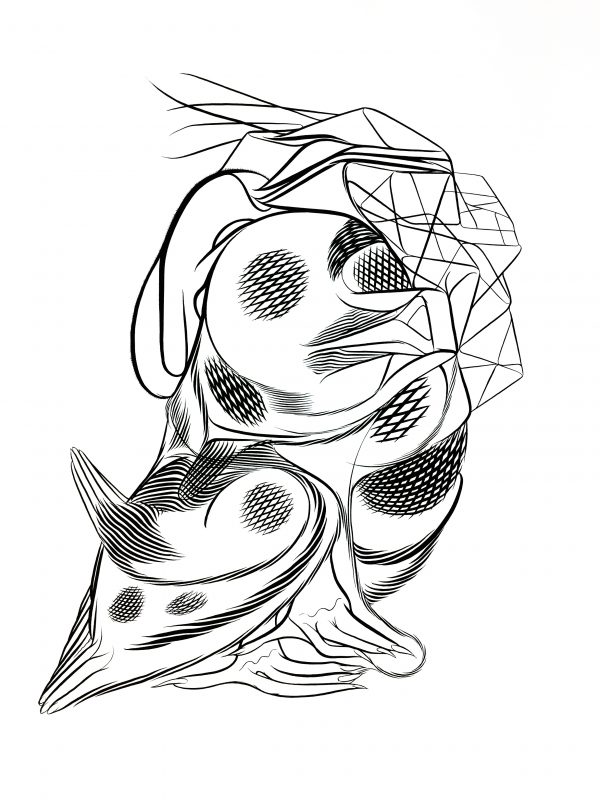
It was the blizzard that brought me back to the gym, weeks later. I’d stopped going, afraid of what else the bike might show me. But that night, as the snow fell, I decided to go for a walk around the block while my husband stayed inside watching television. I found myself walking further away from home, until I was in the neighborhood of my old gym.
Something small and dark fell in the snow by my feet, and I knelt to inspect it in the street lamp’s blue glow. It was a sparrow, dead, its beak slightly parted. Its tiny talons glinted in the light and I remembered the shine of the stationary bicycle in my cellphone’s LED flashlight. I stepped over the bird and walked toward the gym.
I walked down the corridor and peeked into the cardio room. The door was there, with the poster of the woman cresting the hill. Before I could approach it, it swung open, and there she was.
We made eye contact, the crying woman and I. Her eyes were wet and green. She walked past me, down the corridor. This time, I followed her. She ran out the door and onto the sidewalk. I followed her as she waded through a snowdrift, into the street, and jogged to the other side. I followed her, until I felt my feet go out from under me on a patch of ice. I cried out and she stopped and turned to look at me, her mouth a horrified “O.” I wanted to ask her what the room was, what the bike meant.
But before I could get anything out, I saw the headlights of the snowplow headed straight for me, heard the groan of brakes on snow applied too late.
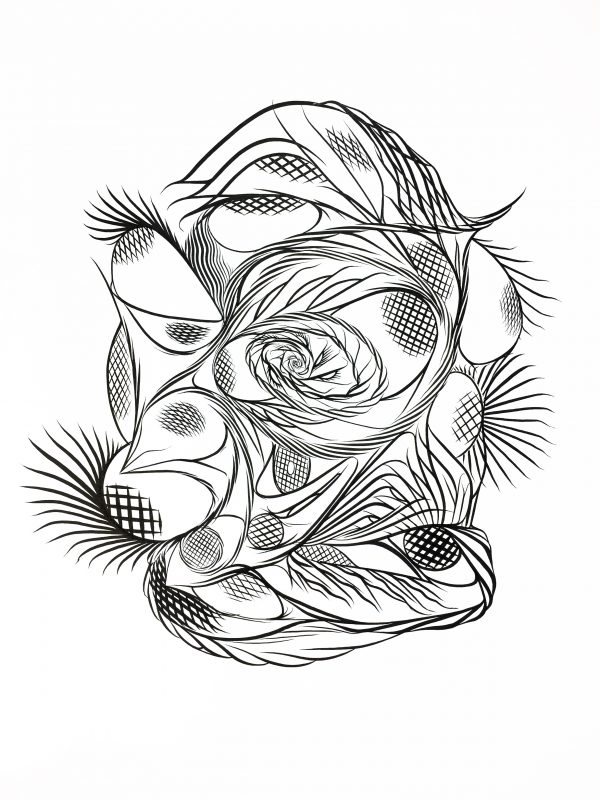
Lena Valencia is the managing editor of One Story. Her writing has appeared in Storychord, BOMB, The Masters Review, and elsewhere. She received her MFA in Fiction from The New School and teaches at Catapult and Sackett Street Writers in New York City.
Robert Medvedz is an artist living and working in Brooklyn. His work involves sumi-e drawing in a manner much like surrealist automatic drawing, using ink and brush directly on paper without a preliminary sketch.